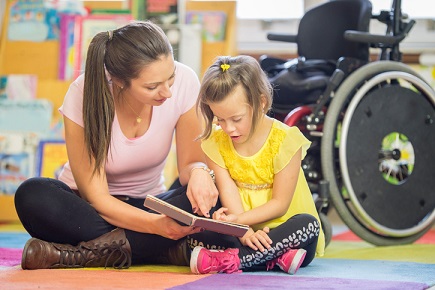
A growing body of research has shown that, when included in mainstream education, children with disabilities thrive in their learning.
Indeed, one of the recommendations by the NSW parliamentary inquiry into the education of children with disabilities was that all children should be included in mainstream education as a default.
However, there are little signs that governments are listening, with some states even increasing the number of segregated educational settings.
Dr David Roy from the University of Newcastle, who works closely with governments and disability advocacy groups, said that as a result the outlook for children with a disability in 2020 is looking “dismal”.
He pointed to absence of people with a disability at the Disability Royal Commission hearings, which included a focus on the education of vulnerable children.
“What was telling for me was that the majority of people who spoke at the Royal Commission did not have a disability, so therefore the lived experience wasn’t being listened to,” Dr Roy told The Educator.
“In addition, there seemed to be justification being made for different opinions about how to support disability rather than actual evidence of how best to support children with a disability, and those opinions were there partly to justify segregated settings”.
Roy said that despite a growing body of research shows that children with a disability in segregated settings not only perform worse academically but are potentially at greater personal risk due to there being less oversight.
“Not only from an educational viewpoint but from a child protection viewpoint, there is enough evidence to say that we should be not creating more special schools but starting to integrate those into the mainstream,” he said.
“Last year, Queensland announced increased numbers of segregated educational settlings and while NSW has not yet moved forward in changing the number of segregated settings, and we’re waiting for the data to come out, but they appear to be increasing”.
Dr Roy said there is a growing push from society to include children with a disability in mainstream schooling.
“Teachers want greater resources to support children in mainstream education, parents want children in mainstream education and children with disabilities want this too, but the system doesn’t seem to be flexible enough to change or move with the data we now have internationally that we need to move to mainstream support,” he said.
“The voice is there but the will to change is not”.
Homeschooling numbers remain high
There are an estimated 20,000 homeschooled students in Australia – a trend that is due largely to concerns over the wellbeing of children who have special needs.
Just 0.45% of parents cite bullying as a reason for opting out of mainstream education, while 6.82% state that it is for religious reasons. However, a massive 22.66% of applications are due to special needs.
“We’re still at the 12-15% increase per year rate on home schooling – that’s in comparison to the 1-2% that you find in mainstream schools,” Dr Roy said.
“So, there’s a significant larger grouping of enrolments happening percentage wise per head of population for home schooling and the largest grouping that is adding to those figures are children with a disability”.
Dr Roy said governments need to look more closely at this issue.
“If parents are voting with their feet to say: ‘this isn’t good enough’, why aren’t education systems doing something about this? It should be a big wake-up call,” he said.
“The numbers of home-schooled children are still low in comparison to those in mainstream education, but it is growing continually”.
Dr Roy said he is cautiously optimistic that the issue will be dealt with by governments.
“I think some of the education systems want to do something about these issues. I still have hope for the disability strategy implementation by the NSW Education Department, which is running programs for innovation that support children with a disability [to be researched evidence-base wise],” he said.
“However, that’s a long process. By the time that process has been completed, children will have completed their education”.


